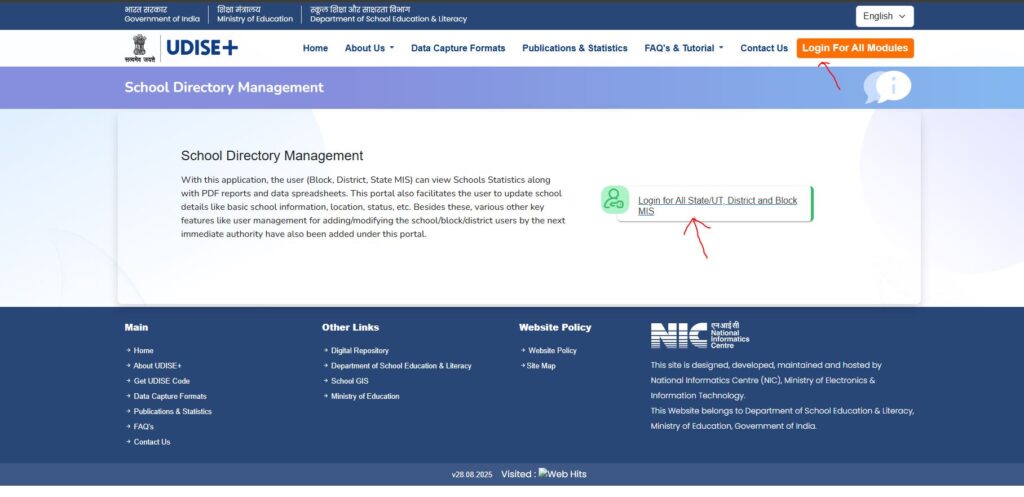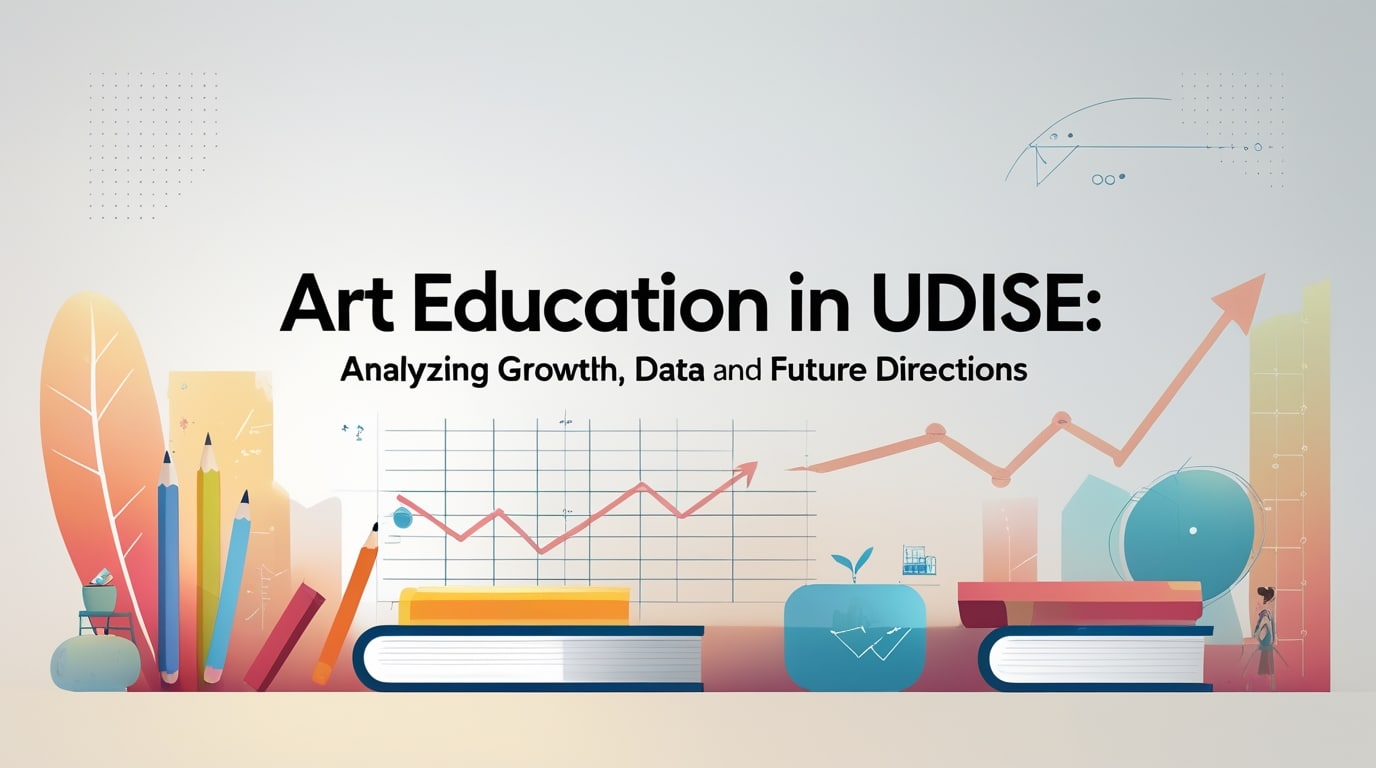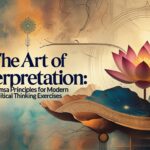Art Education in UDISE and UDISE+: Analyzing Growth, Data, and Future Directions
Art education in UDISE and UDISE+ is rapidly gaining recognition as a key component of holistic learning, playing a vital role in shaping creative, culturally aware, and emotionally intelligent individuals. As India’s educational system embraces broad reforms and technology-driven data collection, these frameworks are providing new ways to measure, foster, and expand opportunities in art education nationwide.
Introduction to Art Education in UDISE and UDISE+
Art education in UDISE and UDISE+ refers to the systematic collection, monitoring, and analysis of data concerning teaching and learning in the fine arts, visual arts, performing arts, and cultural activities across Indian schools. UDISE (Unified District Information System for Education) and its upgraded version, UDISE+, have transformed how art education programs are evaluated and improved, supporting evidence-based policy reforms and greater accountability at every level of the school system.
The Importance of Art Education in Schools
The value of art education extends beyond drawing and painting. It fosters cognitive growth, develops critical thinking, and enhances emotional resilience. Programs underpinned by data from UDISE and UDISE+ facilitate the integration of visual arts, dance, music, and traditional crafts, connecting students to India’s rich heritage while promoting innovative thinking required for the modern world.
Art education in UDISE and UDISE+ is not merely an add-on but a reflection of holistic learning as prescribed under the National Education Policy (NEP) 2020 and the latest National Curriculum Framework. These policies advocate for the inclusion of art as a fundamental part of every child’s school journey.
UDISE and UDISE+: Expanding the Vision for Art Education
The digital transformation of UDISE into UDISE+ has enabled more granular and timely data collection regarding school infrastructure, student enrollments, teacher qualifications, and the presence of art programs across states and union territories. This digital shift ensures:
- Real-time updating of school art facilities and resources.
- Direct tracking of student participation in various artistic activities.
- Systematic reporting of arts-related vocational and co-curricular events.
Through the Data Capture Format (DCF) of UDISE+, accessible to over 1.5 million schools, art activities are no longer overlooked but are increasingly seen as essential for a healthy, vibrant education ecosystem.

Key Data Points for Art Education in UDISE and UDISE+
To understand the status of art education in UDISE and UDISE+, several key data indicators should be, and are increasingly being, captured:
- Number of art teachers and their qualifications at each school level.
- Types of art programs offered: visual arts, music, dance, theater, crafts.
- Infrastructure presence: dedicated art rooms, music halls, resources, and materials.
- Student involvement in co-curricular art and cultural activities.
- Achievements in local, regional, or national art competitions.
- Integration of traditional and folk arts in daily education.
- Vocational art courses are offered to senior students.
These data points help policymakers evaluate gaps and plan targeted interventions to boost the quality and reach of art education in Indian schools.
Integration of Art Education in National Policy and UDISE+
Art education in UDISE and UDISE+ is aligned with the vision of NEP 2020, which emphasizes creativity, innovation, and 21st-century skills for all children. The National Curriculum Framework includes “Learning Standards” specifically for art, encompassing both visual and performing arts, with clear goals set for curricular integration at every stage.
By collecting and using UDISE+ data, states can assess how effectively art programs are being implemented and whether schools have the resources required to meet these national learning standards.
Monitoring Art Education Progress: Features of UDISE+
Some of the features and advantages of UDISE+ in supporting art education include:
- Online, real-time updates that capture changes in school art infrastructure, the number of art educators, and participation levels.
- Unique school identification codes to ensure traceability and accurate mapping of arts-related resources.
- Customized reporting to monitor gaps in access to and quality of arts training, allowing for district and state-level comparisons.
- There is direct accountability for data quality, as all entries must be certified and validated digitally.
The continual improvement of these features helps ensure that a school’s arts ecosystem can be understood accurately, driving more effective resource allocation.
Benefits and Impact of Strong Art Education Data in UDISE and UDISE+
Proper tracking of art education in UDISE and UDISE+ yields a host of benefits:
- Evidence-based planning: States and districts can identify underserved regions or schools lacking art resources, ensuring more equitable distribution of funds.
- Professional development: Data on art teacher training needs can inform robust upskilling programs.
- Student outcomes: Regular measurement of student participation and achievement in the arts confirms the role of art as a vehicle for talent development, inclusion, and well-being.
- Cultural preservation: Detailed reporting on traditional and folk arts supports their integration into modern curricula, preserving India’s intangible heritage.
Vocational Art Education and Career Readiness
UDISE+ now allows for the tracking of vocational programs relating to art, such as courses in animation, graphic design, and media arts. These programs open pathways for creative careers even for students in rural or underserved areas, and their presence in the database signals a recognition of changing workforce needs and the rising importance of creative industries.
Challenges in Art Education Reporting
Despite progress, specific challenges persist:
- Uneven data coverage: Not all schools may accurately report or prioritize data on art activities, leading to underrepresentation.
- Resource gaps: Many rural schools still lack the infrastructure or funding to offer robust art education programs.
- Teacher shortages: Fewer qualified art instructors in remote regions diminish the reach and quality of art education.
- Changing perceptions: There remains a need to convince communities and school leaders of the value of integrating arts as core, not peripheral, to education.
Recommendations for Strengthening Art Education in UDISE and UDISE+
- Mandate comprehensive reporting: All schools should be required to fill in detailed data on art education infrastructure, teacher training, and student outcomes.
- Integrate art into all school levels: Curricula should incorporate arts from the foundational stage, with incentives for innovative teaching.
- Support for local art forms: UDISE+ should track and promote unique cultural and folk art practices at the district level.
- Continuous digital upgrades: Regularly enhance the digital system to reflect better emerging trends in the arts, including digital and media arts.
Conclusion: The Future of Art Education in UDISE and UDISE+
Art education in UDISE and UDISE+ is central to realizing India’s vision of a creative, culturally rich, and innovative society. By harnessing the data-driven insights of these platforms, stakeholders can ensure that every child has the opportunity to participate in and benefit from high-quality art instruction. As reporting becomes more rigorous and inclusive, the role of art education will grow, supporting student success, cultural preservation, and the development of 21st-century skills.



